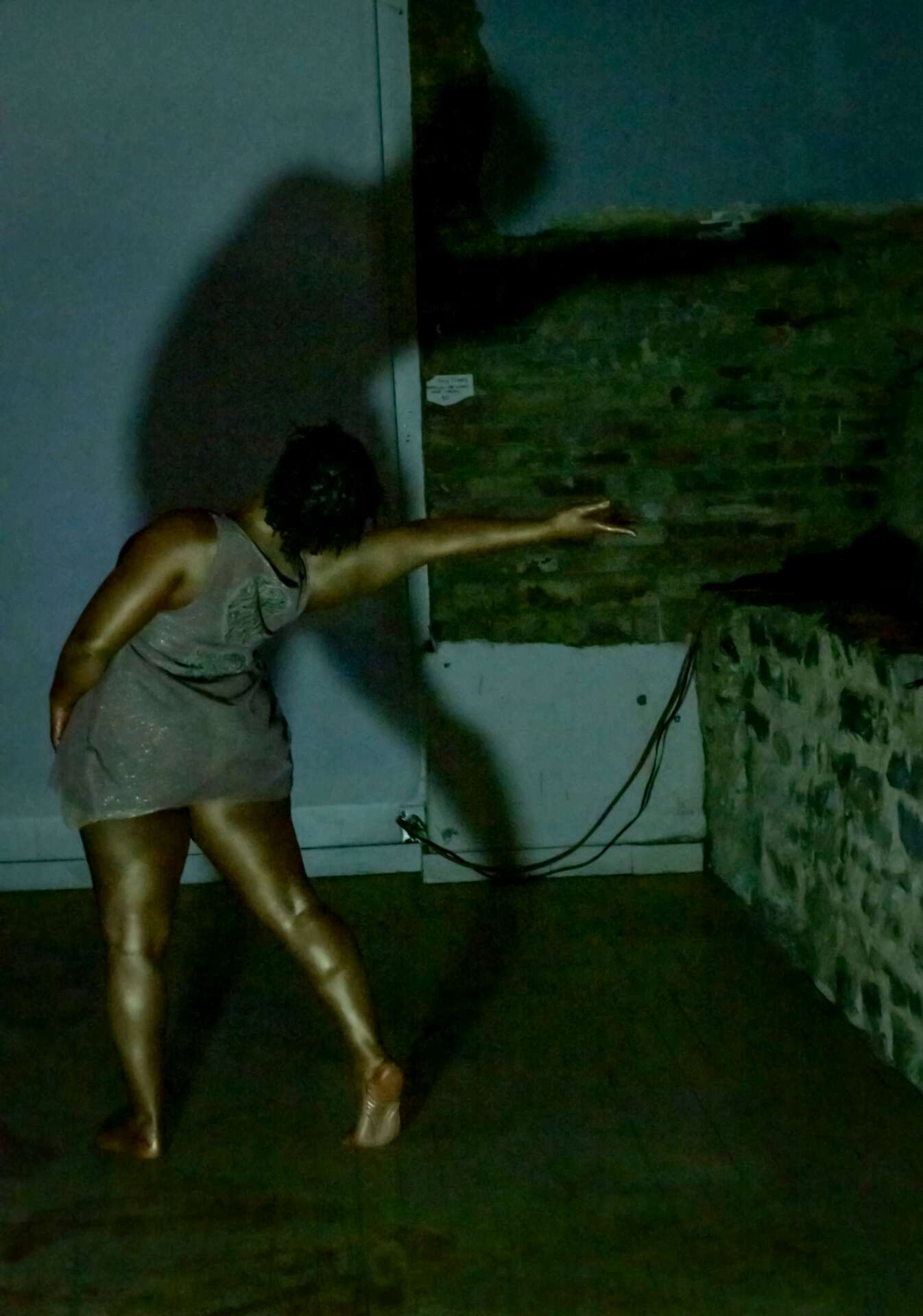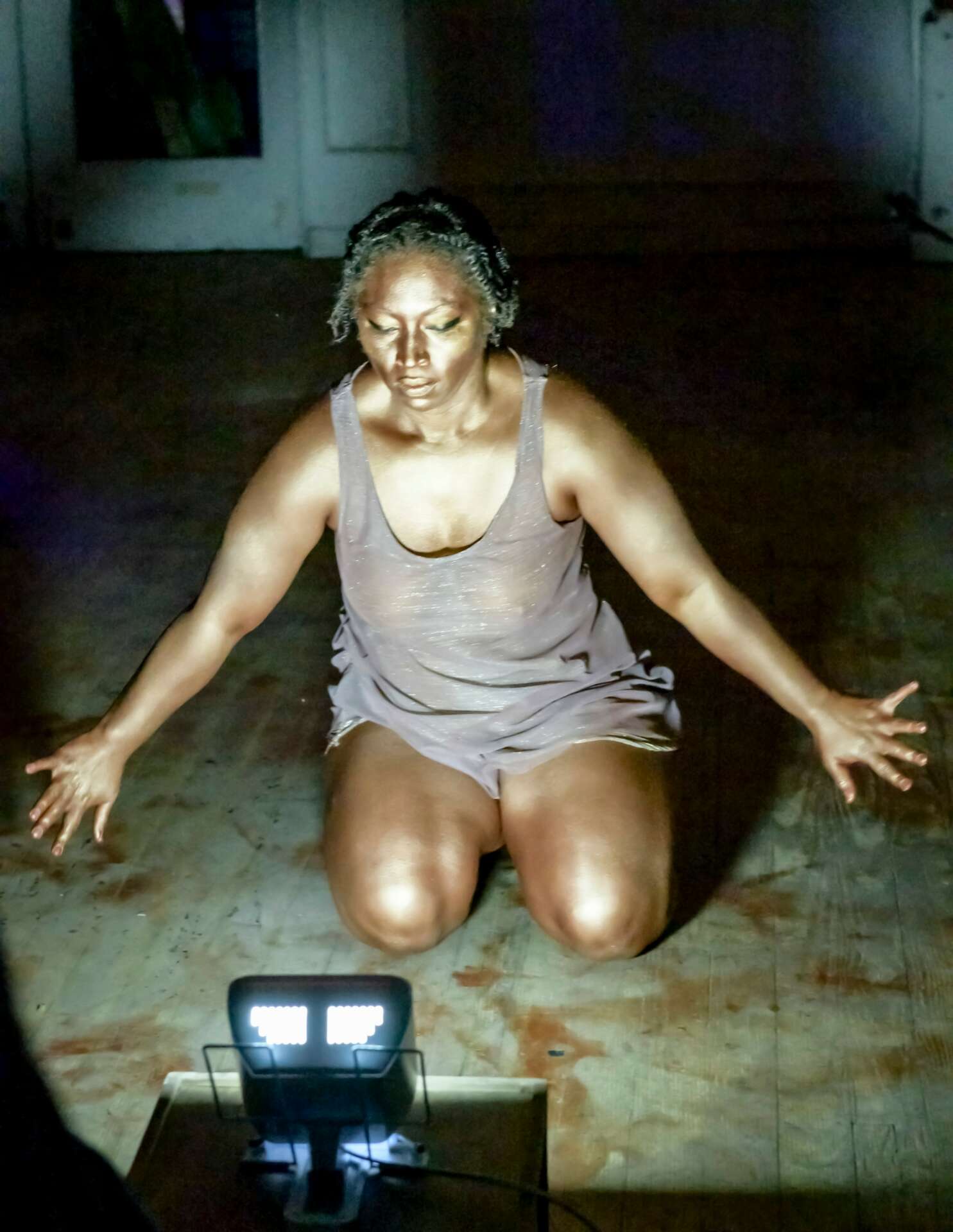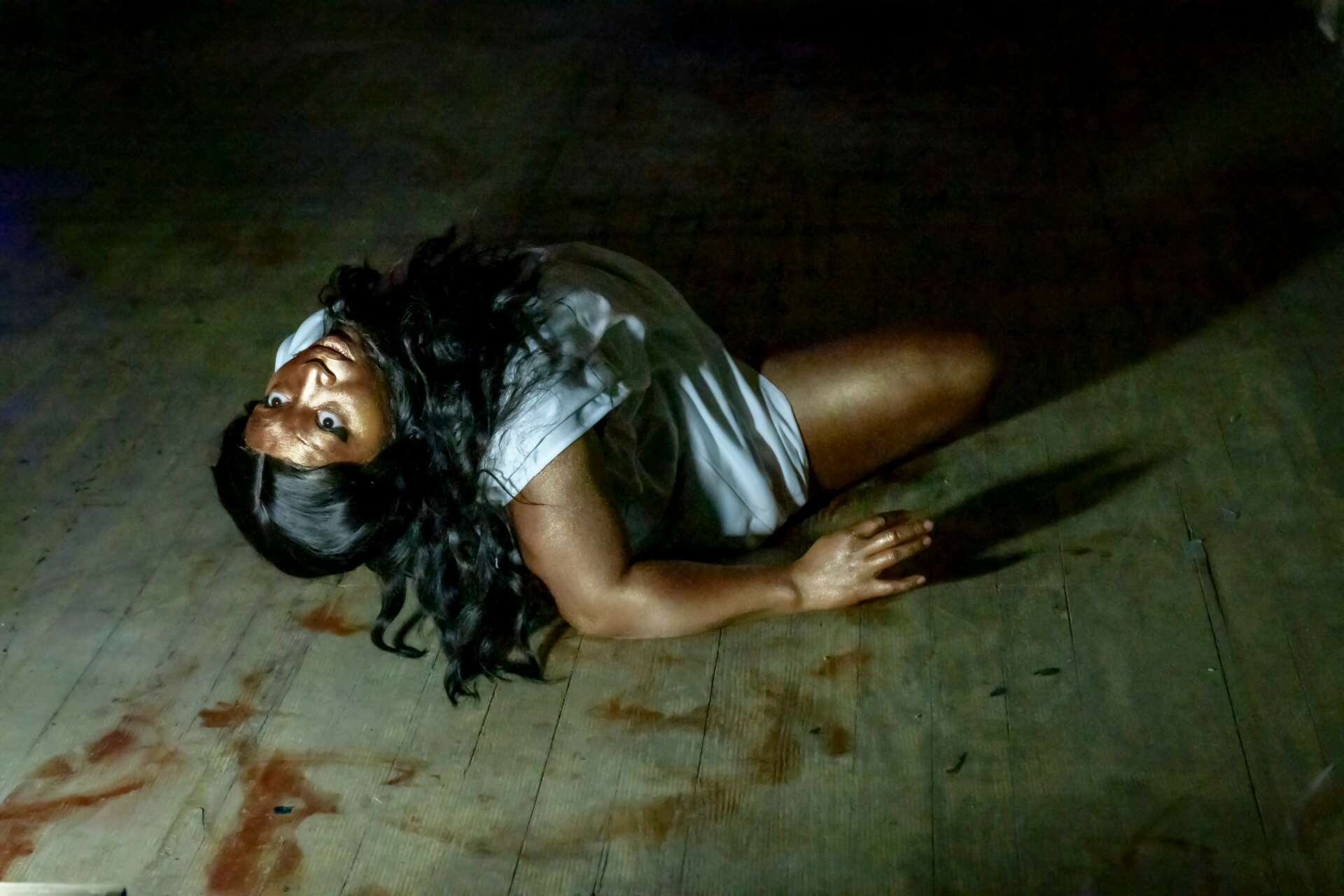We recently connected with Sharon Carelock and have shared our conversation below.
Sharon, thanks for taking the time to share your stories with us today Can you talk to us about a project that’s meant a lot to you?
I just finished two meaningful projects. The first, called “Witnessing a Light Bath”, premiered in March 2023 at No Tomorrow in Underground Atlanta. I choreographed this solo because I wanted a way to artistically describe what it was like to deal with Seasonal Affected Disorder, sometimes called SAD or Winter Blues. Also, I thought my light therapy lamp would make a cool light source for a dance piece. Throughout the choreographic process, I asked myself over and over whether I should make this work. I wanted to be like Bo Burnham and give my audience an honest view of my mental health, even as I entertained them, but I didn’t want to turn my depression into a gimmick. Amazingly, the biblical story of Bathsheba helped. Her story didn’t allay all my fears about how my audience would view me, and I didn’t need it to. Her story helped me tell my own. The second project was with the Atlanta-based choreographer, Sammy Spriggs. Her group piece, which included Leo Briggs and M Wu, was about joy. “…I feel that” premiered in June 2023 at Dance Foundry. Working on two pieces, one about depression and the other about joy, didn’t leave me double-minded in the end. Nor did I use the piece about joy to escape the work required to express depression. Engaging in both processes at the same time was very grounding. I learned very key lessons about myself. I am not just one thing, and it very possible to feel opposite-spectrum-end emotions at the same time.

As always, we appreciate you sharing your insights and we’ve got a few more questions for you, but before we get to all of that can you take a minute to introduce yourself and give our readers some of your back background and context?
When asked as a child what I wanted I wanted to be when I grew up, I said “Debbie Allen.” I think the first time I saw the word choreographer was by her name. And yes, I didn’t really know what that word meant. I just knew it had something to do with dance. I also gravitated to fact that I saw a black woman acting, singing, dancing, as well working in artistic leadership roles. Saying “Debbie Allen” was declaring an idea. I didn’t have to be just one thing. I didn’t have to do just one thing. Christina Wallace describes this is being a “human Venn diagram” in her book The Portfolio Life, and I adhere to that philosophy. As an undergraduate, I double-majored in dance and theater at Emory University. Then I learned stage management, lighting design, and light and sound board operation, so I can work freelance gigs while I continued to performed. I got my MFA in Dance from Florida State University, and shortly after graduating, I took a production manager job at Core Dance to pay bills while I continued to perform and choreograph. My current day job is executive assistant in one of the branches at the Centers for Disease Control and Prevention. I still perform, choreograph, and create in general. I call myself a storyteller because that’s who I am. No matter what I’m doing, I’m using my clear artistic voice to help me and others organize, research, and present our truest selves in the best way possible.

In your view, what can society to do to best support artists, creatives and a thriving creative ecosystem?
I got my job at the CDC because the hiring manager took a look at my mostly creative and arts driven resume and saw that I would be a good fit for an administrative position in a science based field. And she was right. It is a good fit. I feel like I thrive at my day job, and I work with people who see my creativity and artistic voice as an asset. I think society can best support artists by seeing them as vital members of the ecosystem at large. Artists shouldn’t have to exist on the outskirts of the community, only to be called upon when people need entertainment. Also, artists’ skills are not just transferrable to administrative or service fields. Artists are also scientists, mathematicians, doctors, lawyers, etc. No one person is one thing, and if society can embrace the complexities and intersectionalities of individuals, then artists can exist and thrive anywhere.

Are there any books, videos, essays or other resources that have significantly impacted your management and entrepreneurial thinking and philosophy?
I read The Artist’s Way by Julia Cameron when I briefly contemplated giving up on presenting anything remotely artistic. The exercises in that book helped me heal and find my way (ha, ha) back to myself. I think was the point. I wasn’t going to figure out what I wanted to say or how I wanted to use art to say it without truly understanding and knowing myself. Cameron is a very respectful guide. Also, I just recently finished Rest is Resistance: A Manifesto by Tricia Hersey, and if The Artist’s Way is a journey to finding and expressing me, then Rest is Resistance has taught me that I can take as long as a want on that journey and have as many rest stops as I need. What a relief! So much of my youth was geared towards getting to a point of success as fast I could. Now, I don’t hang up. I will experience many successes (and failures) in my long life, each one unfolding in its due time. If that is the case, I’m going to take the time to enjoy me and all my expression.

Contact Info:
- Instagram: @seecarelock
- Linkedin: www.linkedin.com/in/sharoncarelock
Image Credits
Personal Photo credit: Emily Iva Photography Additional Photos credit: Michael Boatright Photography, Courtesy of DanceATL


